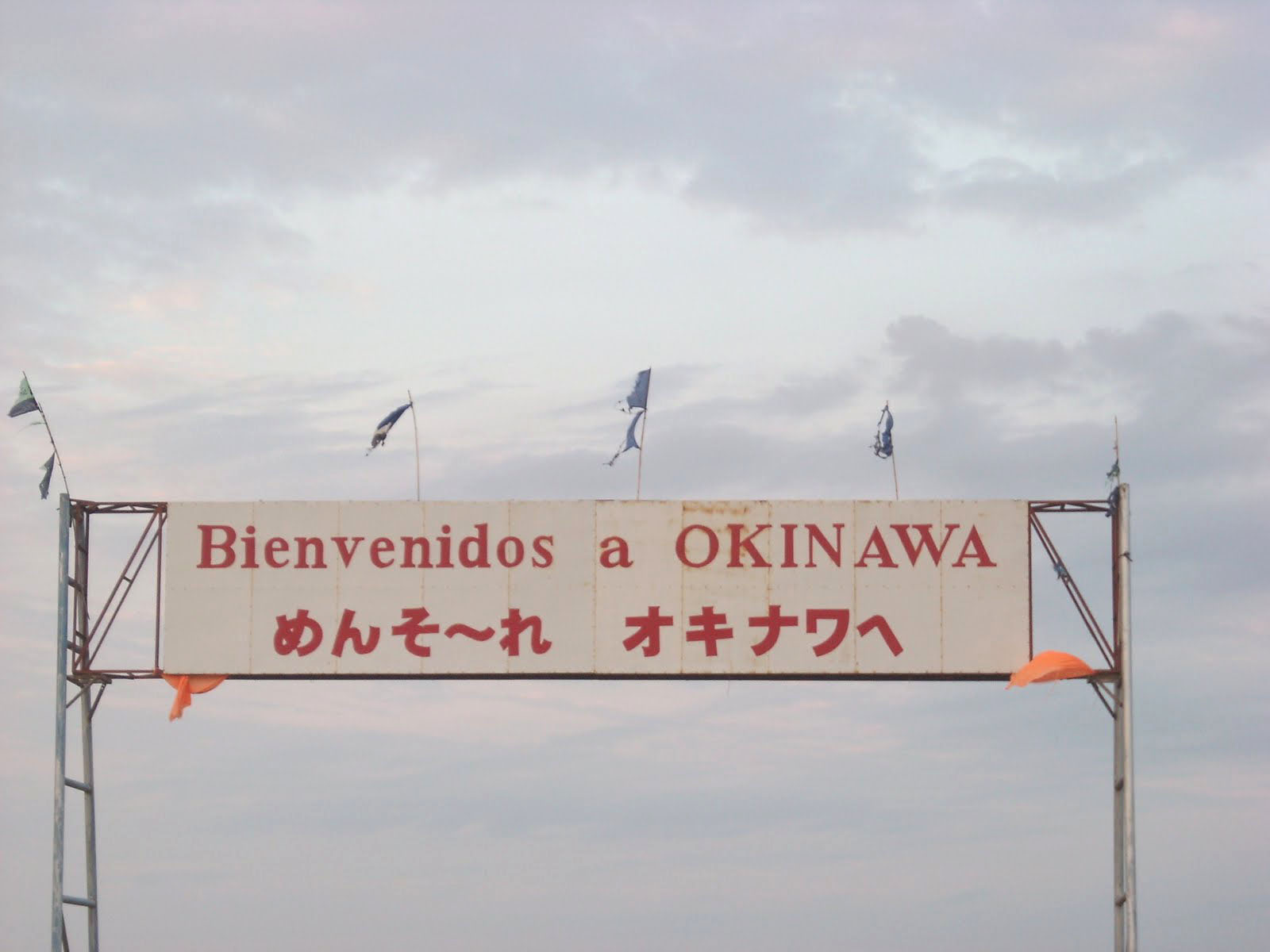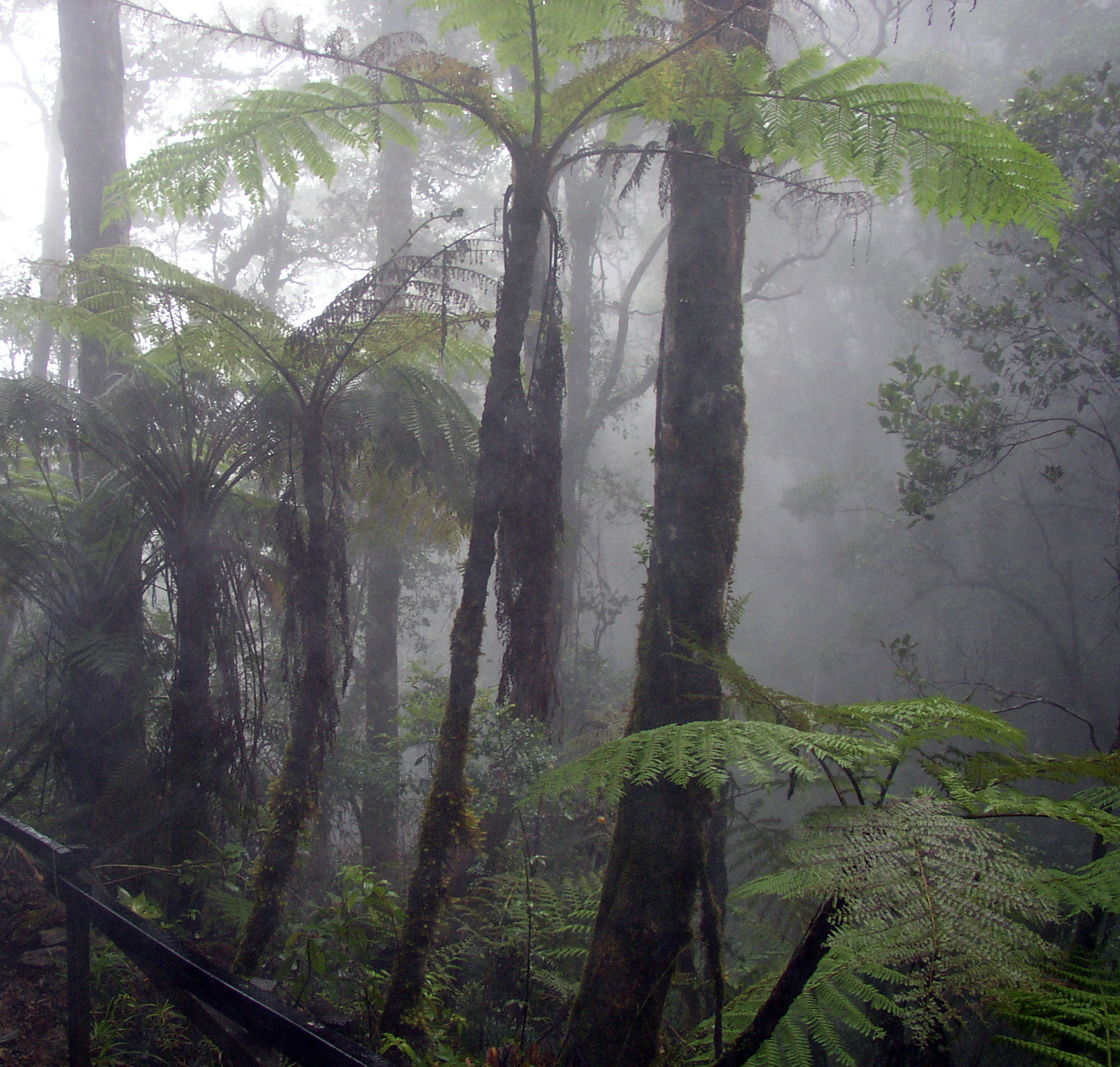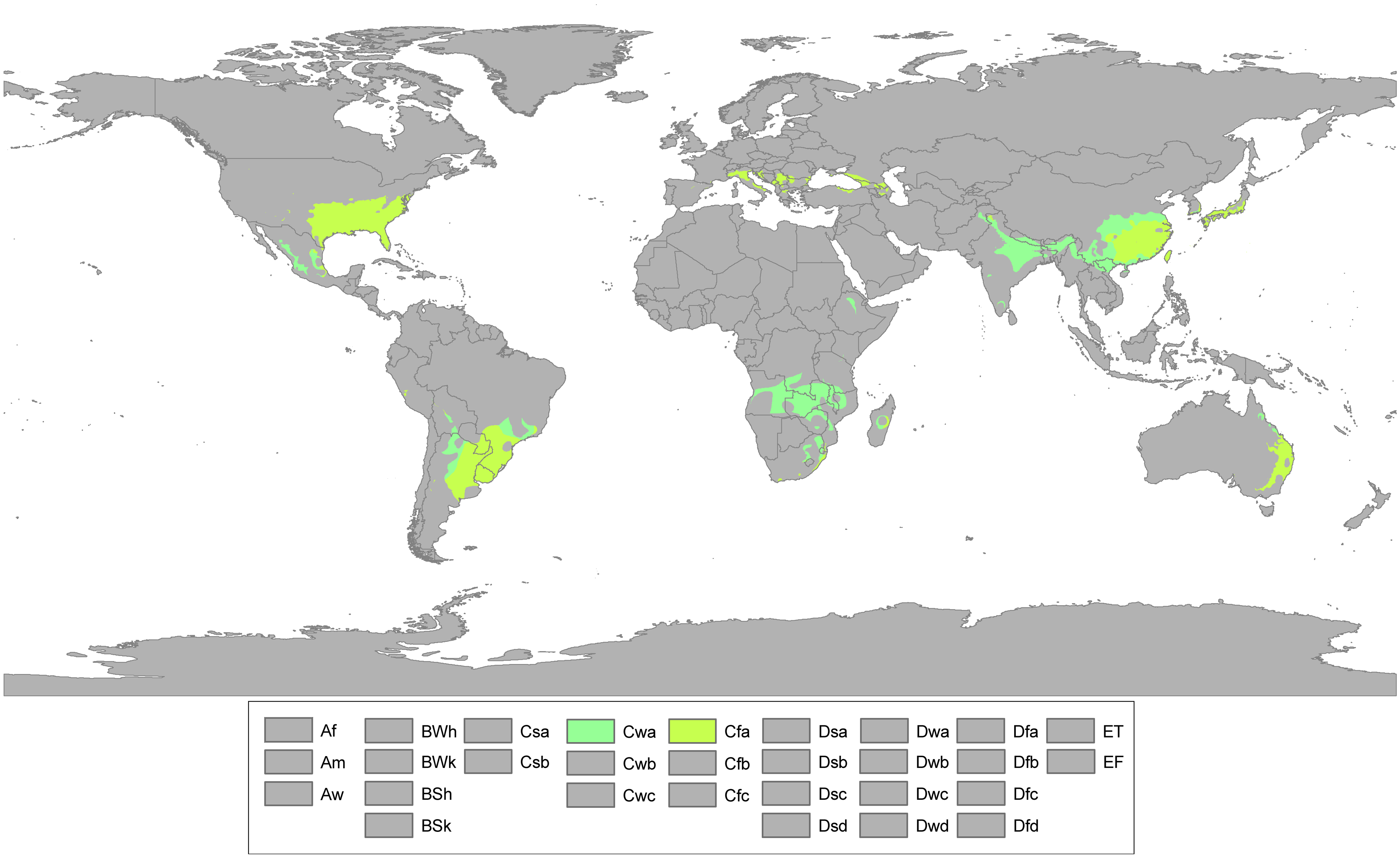|
Ryukyu Islands
The , also known as the or the , are a chain of Japanese islands that stretch southwest from Kyushu to Geography of Taiwan, Taiwan: the Ryukyu Islands are divided into the Satsunan Islands (Ōsumi Islands, Ōsumi, Tokara Islands, Tokara and Amami Islands, Amami) and Okinawa Prefecture (Daitō Islands, Daitō, Miyako Islands, Miyako, Yaeyama Islands, Yaeyama, Senkaku Islands, Senkaku, Okinawa Islands, Okinawa, Sakishima Islands (further divided into the Miyako Islands, Miyako and Yaeyama Islands), and Yonaguni as the westernmost). The larger ones are mostly volcanic islands and the smaller mostly coral island, coral. The largest is Okinawa Island. The climate of the islands ranges from humid subtropical climate (Köppen climate classification ''Cfa'') in the north to tropical rainforest climate (Köppen climate classification ''Af'') in the south. Precipitation is very high and is affected by the rainy season and typhoons. Except the outlying Daitō Islands, the island chain ha ... [...More Info...] [...Related Items...] OR: [Wikipedia] [Google] [Baidu] |
Okinawan Language
Okinawan (, , , ), or more precisely Central Okinawan, is a Northern Ryukyuan languages, Ryukyuan language spoken primarily in the southern half of the Okinawa Island, island of Okinawa, as well as in the surrounding islands of Kerama Islands, Kerama, Kumejima, Okinawa, Kumejima, Tonaki, Okinawa, Tonaki, Aguni, Okinawa, Aguni and a number of smaller peripheral islands. Central Okinawan distinguishes itself from the speech of Northern Okinawa, which is classified independently as the Kunigami language. Both languages are listed by UNESCO as Atlas of the World's Languages in Danger, endangered. Though Okinawan encompasses a number of local dialects, the Shuri, Okinawa, Shuri–Naha variant is generally recognized as the ''de facto'' standard, as it had been used as the official language of the Ryukyu Kingdom since the reign of King Shō Shin (1477–1526). Moreover, as the former capital of Shuri was built around the royal palace, the language used by the royal court became the reg ... [...More Info...] [...Related Items...] OR: [Wikipedia] [Google] [Baidu] |
Tokara Islands
The is an archipelago in the Nansei Islands, and are part of the Satsunan Islands, which is in turn part of the Ryukyu Archipelago. The chain consists of twelve small islands located between Yakushima and Amami-Oshima. The islands have a total area of . Administratively, the whole group belongs to Toshima, Kagoshima, Toshima Village, Kagoshima Prefecture, Japan. Only seven of the islands are permanently inhabited. The islands, especially Takarajima, are home to the Tokara horse. Etymology One theory holds that the name "Tokara" was derived from ''tohara'', or "distant sea area", as viewed from Okinawa Prefecture, Okinawa. Another theory states that the name come from the Ainu language, Ainu word ''tokap'', which means "breast". The southernmost inhabited island in the archipelago, Takarajima, has a mountain, Megamiyama (lit. Goddess Mountain) with such a shape. History Mention is made in the ''Shoku Nihongi'' under an entry for the year 699 of an island called "Tokan", which ... [...More Info...] [...Related Items...] OR: [Wikipedia] [Google] [Baidu] |
Tropical Rainforest Climate
A tropical rainforest climate or equatorial climate is a tropical climate sub-type usually found within 10 to 15 degrees latitude of the equator. There are some other areas at higher latitudes, such as the coast of southeast Florida, United States, and Okinawa, Japan that fall into the tropical rainforest climate category. They experience high mean annual temperatures, small temperature ranges, and rain that falls throughout the year. Regions with this climate are typically designated ''Af'' by the Köppen climate classification. A tropical rainforest climate is typically hot, very humid, and wet with no dry season. Description Tropical rainforests have a type of tropical climate (with an average temperature of at least in their coldest month) in which there is no dry season—all months have an average precipitation value of at least . There are no distinct wet or dry seasons as rainfall is high throughout the months. One day in a tropical rainforest climate can be very simil ... [...More Info...] [...Related Items...] OR: [Wikipedia] [Google] [Baidu] |
Köppen Climate Classification
The Köppen climate classification divides Earth climates into five main climate groups, with each group being divided based on patterns of seasonal precipitation and temperature. The five main groups are ''A'' (tropical), ''B'' (arid), ''C'' (temperate), ''D'' (continental), and ''E'' (polar). Each group and subgroup is represented by a letter. All climates are assigned a main group (the first letter). All climates except for those in the ''E'' group are assigned a seasonal precipitation subgroup (the second letter). For example, ''Af'' indicates a tropical rainforest climate. The system assigns a temperature subgroup for all groups other than those in the ''A'' group, indicated by the third letter for climates in ''B'', ''C'', ''D'', and the second letter for climates in ''E''. Other examples include: ''Cfb'' indicating an oceanic climate with warm summers as indicated by the ending ''b.'', while ''Dwb'' indicates a semi-Monsoon continental climate, monsoonal continental climate ... [...More Info...] [...Related Items...] OR: [Wikipedia] [Google] [Baidu] |
Humid Subtropical Climate
A humid subtropical climate is a subtropical -temperate climate type, characterized by long and hot summers, and cool to mild winters. These climates normally lie on the southeast side of all continents (except Antarctica), generally between latitudes 25° and 40° and are located poleward from adjacent tropical climates, and equatorward from either humid continental (in North America and Asia) or oceanic climates (in other continents). It is also known as warm temperate climate in some climate classifications. Under the Köppen climate classification, ''Cfa'' and ''Cwa'' climates are either described as humid subtropical climates or warm temperate climates. This climate features mean temperature in the coldest month between (or ) and and mean temperature in the warmest month or higher. However, while some climatologists have opted to describe this climate type as a "humid subtropical climate", Köppen himself never used this term. The humid subtropical climate classific ... [...More Info...] [...Related Items...] OR: [Wikipedia] [Google] [Baidu] |
Coral Island
A coral island is a type of island formed from coral detritus and associated organic material. It occurs in tropical and sub-tropical areas, typically as part of a coral reef which has grown to cover a far larger area under the sea. The term low island can be used to distinguish such islands from high islands, which are formed through volcanic action. Low islands are formed as a result of sedimentation upon a coral reef or of the uplifting of such islands. Ecosystem Coral reefs are some of the oldest ecosystems on the planet, over geological time, they form massive reefs of limestone. The reef environment supports more plant and animal species than any other habitat. Coral reefs are vital for life in multiple aspects some of which include structure, ecology, and nutrient cycles which all support biodiversity in the reefs. Coral reefs build massive calcareous skeletons that serve as homes for animals such as fish hiding inside the crooks and crannies of the reef and barnacle ... [...More Info...] [...Related Items...] OR: [Wikipedia] [Google] [Baidu] |
Volcanic Island
Geologically, a volcanic island is an island of volcanic origin. The term high island can be used to distinguish such islands from low islands, which are formed from sedimentation or the uplifting of coral reefs (which have often formed on sunken volcanoes). Definition and origin There are a number of volcanic islands that rise no more than above sea level, often classified as islets or rocks, while some low islands, such as Banaba, Henderson Island, Makatea, Nauru, and Niue, rise over above sea level. The two types of islands are often found in proximity to each other, especially among the islands of the South Pacific Ocean, where low islands are found on the fringing reefs that surround most volcanic islands. Volcanic islands normally rise above a hotspot or subduction zone. Habitability Volcanic islands usually range in size between . Islands above a certain size usually have fresh groundwater, while low islands often do not, so volcanic islands are more ... [...More Info...] [...Related Items...] OR: [Wikipedia] [Google] [Baidu] |
Yonaguni
, one of the Yaeyama Islands, is the westernmost island of Japan, lying from the east coast of Taiwan, between the East China Sea and the Philippine Sea. The island is administered as the Towns of Japan, town of Yonaguni, Okinawa, Yonaguni, Yaeyama, Okinawa, Yaeyama Gun, Okinawa Prefecture, Okinawa, and there are three settlements: Sonai, Kubura, and Higawa. There have been discussions to establish direct ferry services with Taiwan in order to bolster tourism. Name The name ''Yonaguni'' is an exonym related to the native name ''Dunan'' in Yonaguni language, Yonaguni, with the regular sound change of ''*y-'' to ''d-'' and elision of the intervocalic ''*-g-'' in Yonaguni. The form ''yona-'' likely means "grain, rice", seen in other toponyms such as Yonabaru, Okinawa, Yonabaru, hence possibly meaning "grain country". History Early human migration from Taiwan to Yonaguni island has long been the subject of scholarly debate. In 2019, a team of Japanese and Taiwanese researchers suc ... [...More Info...] [...Related Items...] OR: [Wikipedia] [Google] [Baidu] |
Sakishima Islands
The (or 先島群島, ''Sakishima-guntō'') (Okinawan language, Okinawan: ''Sachishima'', Miyakoan language, Miyako: ''Saksїzїma'', Yaeyama language, Yaeyama: ''Sakїzїma'', Yonaguni language, Yonaguni: ''Satichima'') are an archipelago located at the southernmost end of the Japanese Archipelago. They are part of the Ryukyu Islands and include the Miyako Islands and the Yaeyama Islands. The islands are administered as part of Okinawa Prefecture, Japan. Inhabited islands Sakishima Islands *Miyako Islands (former Miyako Subprefecture) ** Miyakojima, Okinawa, Miyakojima City ***Ikemajima, Ikema Island (''Ikema-jima'') ***Irabu Island (''Irabu-jima'') ***Kurimajima, Kurima Island (''Kurima-jima'') ***Miyako-jima, Miyako Island (''Miyako-jima'') ***Ogami Island, Ōgami Island (''Ōgami-jima'') ***Shimojishima, Shimoji Island (''Shimoji-shima'') ** Tarama, Okinawa, Tarama Village ***Tarama Island (''Tarama-jima'') ***Minnajima (Tarama, Okinawa), Minna Island (''Minna-jima'') *Yaeya ... [...More Info...] [...Related Items...] OR: [Wikipedia] [Google] [Baidu] |
Okinawa Islands
The are an island group in Okinawa Prefecture, Japan, and are the principal island group of the prefecture. The Okinawa Islands are part of the larger Ryukyu Islands group and are located between the Amami Islands of Kagoshima Prefecture to the northeast and the Sakishima Islands of Okinawa Prefecture to the southwest. The Okinawa Islands, apart from the main island, contain three smaller island groups: the Kerama, Yokatsu and island groups. The Okinawa Islands are the political, cultural and population center of Okinawa Prefecture. The prefectural capital of Naha is within the island group. 90% of the population of the prefecture reside within the Okinawa Islands, primarily on the largest island of the group, Okinawa Island. Access to the various Okinawa Islands is primarily via small airports which connect to Naha Airport. Additionally, the islands are connected via ferry service to the Port of Naha in the prefectural capital. The Okinawa Islands are within the subtropica ... [...More Info...] [...Related Items...] OR: [Wikipedia] [Google] [Baidu] |
Senkaku Islands
The Senkaku Islands, known as the Diaoyu Islands in China and the Tiaoyutai Islands in Taiwan, are a group of uninhabited islands in the East China Sea, administered by Japan. They were historically known in the Western world as the Pinnacle Islands. The islands are located northeast of Taiwan, east of China, west of Okinawa Island, and north of the southwestern end of the Ryukyu Islands. The islands are the focus of a territorial dispute between Japan and China and between Japan and Taiwan. China claims the discovery and ownership of the islands from the 14th century, while Japan maintained ownership of the islands from 1895 until its surrender at the end of World War II. The United States administered the islands as part of the United States Civil Administration of the Ryukyu Islands from 1945 until 1972, when the islands returned to Japanese control under the Okinawa Reversion Agreement between the United States and Japan. The discovery of potential undersea oil reserves ... [...More Info...] [...Related Items...] OR: [Wikipedia] [Google] [Baidu] |
Yaeyama Islands
The Yaeyama Islands (八重山列島 ''Yaeyama-rettō'', also 八重山諸島 ''Yaeyama-shotō'', Yaeyama: ''Yaima'', Yonaguni: ''Daama'', Okinawan: ''Yeema'', Northern Ryukyuan: ''Yapema'') are an archipelago in the southwest of Okinawa Prefecture, Japan, and cover . The islands are located southwest of the Miyako Islands, part of the Ryukyu Islands archipelago. The Yaeyama Islands are the most remote part of Japan from the main islands and contain Japan's southernmost ( Hateruma) and westernmost (Yonaguni) inhabited islands. The city of Ishigaki serves as the political, cultural, and economic center of the Yaeyama Islands. On maps dating to the 1700s, the Yaeyama Group of Islands appears as the "Majico Sima Group", "Nambu-soto Islands", "Nambu Soto", and the "Taipin Islands". Name The name ''Yaeyama'' literally means "multilayered mountains", and is related to the native name ''Yaima'' in Yaeyama, which possibly comes from a reconstructed Proto-Ryukyuan form ''*jajama'' ... [...More Info...] [...Related Items...] OR: [Wikipedia] [Google] [Baidu] |










